Around Atlanta
High Museum is Exclusive Southeast Venue for Dawoud Bey Photography Retrospective
Published
4 years agoon
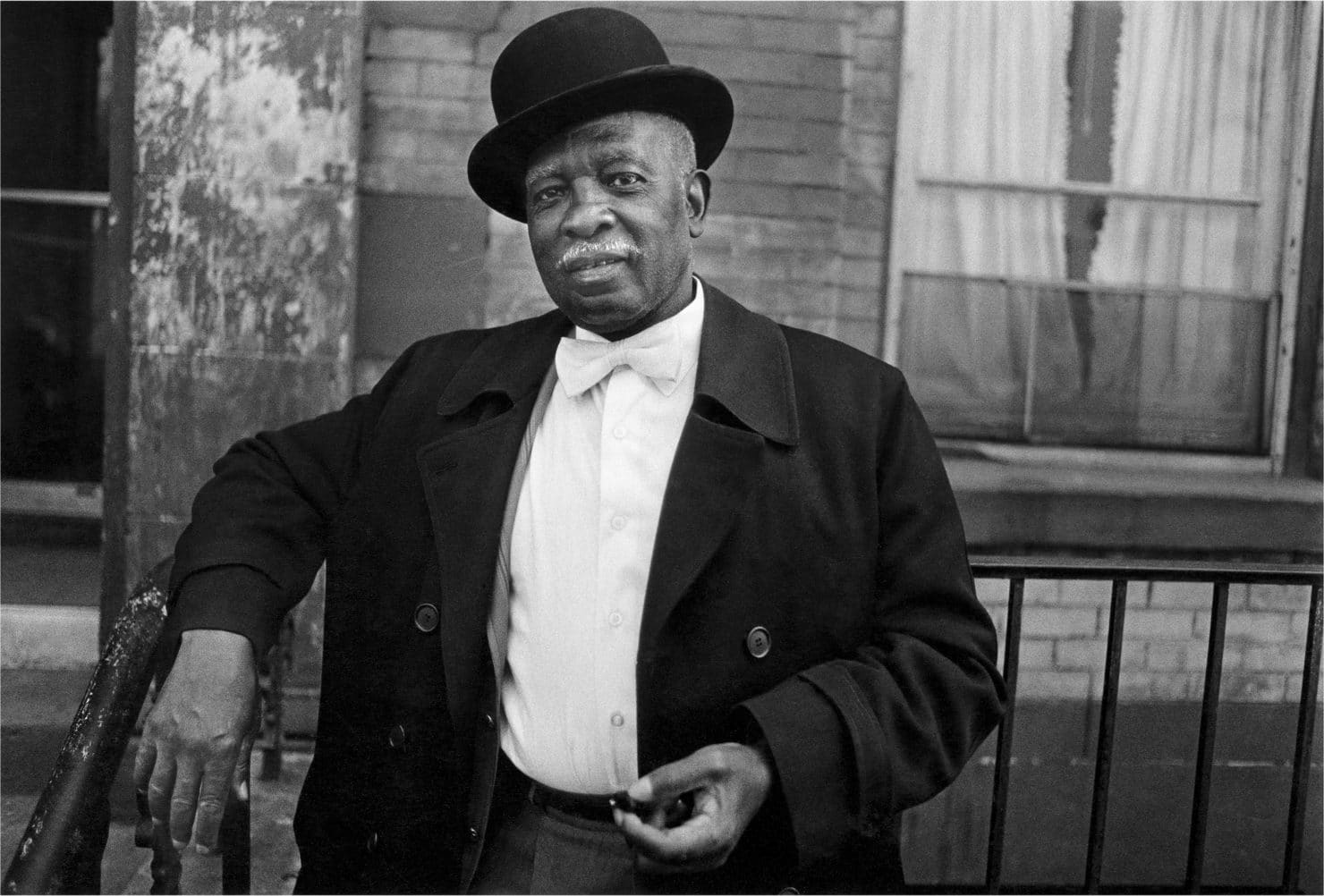
For more than four decades, renowned photographer Dawoud Bey has created powerful and tender photographs that portray underrepresented communities and explore African American history. From portraits in Harlem and classic street photography to nocturnal landscapes and large-scale studio portraits, his works combine an ethical imperative with an unparalleled mastery of his medium. Coming this fall, the High Museum of Art will celebrate his important contributions to photography as the exclusive Southeast venue for “Dawoud Bey: An American Project” (Dec. 12, 2020-March 14, 2021), the artist’s first full career retrospective in 25 years.
Co-organized by the San Francisco Museum of Modern Art (SFMOMA) and the Whitney Museum of American Art, New York, the exhibition will feature approximately 80 works that span the breadth of Bey’s career, from his earliest street portraits made in Harlem in the 1970s to his most recent series reimagining sites of the Underground Railroad (2017).
The High has enjoyed a long and fruitful relationship with Bey, who was commissioned in 1996 for the Museum’s inaugural “Picturing the South” series, which asks noted photographers to turn their lens toward the American South. For his project, Bey collaborated with Atlanta high school students to create empathetic, larger-than-life portraits. Made with the monumental 20-by-24-inch Polaroid camera, these photographs explore the complexity of adolescence as a time of critical identity formation and expand the concept of portraiture. The High now holds more than 50 photographs by Bey, one of the most significant museum collections of his work.
“Bey’s portraits are remarkable for their keen sensitivity and for how they elicit and honor their subjects’ sense of self, which is partly an outcome of the artist’s collaborative practice,” remarked Sarah Kennel, the High’s Donald and Marilyn Keough Family curator of photography. “Given the museum’s long relationship with Bey and the strength of our holdings, we are thrilled to present this important retrospective. We look forward to sharing the artist’s photographs and his powerful and moving reflections on African American history and identity in their country with our visitors.”
Bey, born in 1953 in Queens, New York, began to develop an interest in photography as a teenager. He received his first camera as a gift from his godmother in 1968, and the next year, he saw the exhibition “Harlem on My Mind” at The Metropolitan Museum of Art. Widely criticized for its failure to include significant numbers of artworks by African Americans, the exhibition’s representation of Black subjects nonetheless made an impression on Bey and inspired him to develop his own documentary project about Harlem in 1975. Since that time, he has worked primarily in portraiture, making tender, psychologically rich and direct portrayals, often in collaboration with his subjects. More recently, he has explored seminal moments in African American history through both portraiture and landscape.
“Dawoud Bey: An American Project” will include work from the artist’s eight major series and is organized to reflect the development of Bey’s vision throughout his career and to highlight his enduring engagement with portraiture, place and history.
The Street
Bey’s landmark black-and-white 1975-78 series “Harlem, USA” documents portraits and street scenes with locals of the historic neighborhood in New York. As a young man growing up in Queens, Bey was intrigued by his family’s history in Harlem, where his parents met and where he visited family and friends throughout childhood. The series premiered at the Studio Museum in Harlem in 1979, when Bey was just 26.
In addition to works from that series, the exhibition will include a remarkable series of street photographs Bey made in Syracuse, New York, that demonstrate his keen eye for portraiture and his ability to respond with both spontaneity and sensitivity to his subjects and their environment. These works are accompanied by more formal street portraits that Bey created in the 1980s in areas such as Brooklyn, New York, and Washington, D.C. Made with a large-format camera and Polaroid film, these photographs reflect a more intimate and enduring exchange between Bey and his subjects, and by extension, the viewer.
The exhibition will also feature the series “Harlem Redux,” which marks Bey’s return to the area from 2014 to 2017. This newer series of large-format color landscapes and streetscapes at once documents and mourns the transformation of the community as it has become more gentrified and its original residents increasingly displaced.
The Studio
After honing his skills in street photography, Bey moved toward studio work in the 1990s, using a massive 20-by-24-inch Polaroid camera to make a series of sensitive and direct color portraits, first of friends and later of teenagers he met through a 1992 residency at the Addison Gallery of American Art in Andover, Massachusetts. At the time, Bey also began to experiment with beautifully lit multipanel Polaroid portraits that challenge the singularity of the photographic print and suggest the complexity of identity.
In 2002, a residency at the University of Chicago’s Smart Museum of Art inspired Bey to begin the series “Class Pictures.” Using a view camera to create striking, large-scale color portraits of high school students, Bey asked the students to write narratives to accompany the photographs. Over the next four years, Bey continued work on the series at high schools across the United States. By focusing on teenagers from a wide range of economic, social and ethnic backgrounds and giving them an opportunity to reveal their thoughts, fears and dreams at a critical moment of identity formation, Bey created a diverse group of thoughtful and introspective portraits that challenge stereotypes of adolescence.
History
The exhibition closes with works from two of Bey’s most recent series exploring African American history and collective memory.
“The Birmingham Project,” created in 2012 as a commission from the Birmingham Museum of Art, memorializes the victims of the 1963 bombing of the 16th Street Baptist Church in Birmingham, Alabama, and its violent aftermath. The series features expressive portraits of children who are the same age as the bombing victims paired with photographs of adults who are the ages those children would have been in 2012 had they lived. The photographs, along with an accompanying video piece, are stirring reminders of the precious lives lost and foreground the enduring legacy of racism and violence against African Americans.
In 2017, Bey completed “Night Coming Tenderly, Black,” a series of beautifully rendered and evocative images made in Ohio where the Underground Railroad once operated. As landscapes, the large black-and-white photographs mark a departure from the artist’s previous work, but they emphasize many of the same existential questions. The series, whose title is drawn from a Langston Hughes poem, conjures the spatial and sensory experience of an enslaved person’s escape to liberation as imagined by the artist. Shot by day but printed in deep shades of black and gray as if they were taken at night, these evocative and mysterious works explore blackness as both color and metaphor for race.
“Dawoud Bey: An American Project” will be presented in the High’s Wieland Pavilion Lower Level.
Related
Around Atlanta
Greek Film Expo Brings Acclaimed Features and Short Films to Atlanta
Published
2 weeks agoon
October 7, 2024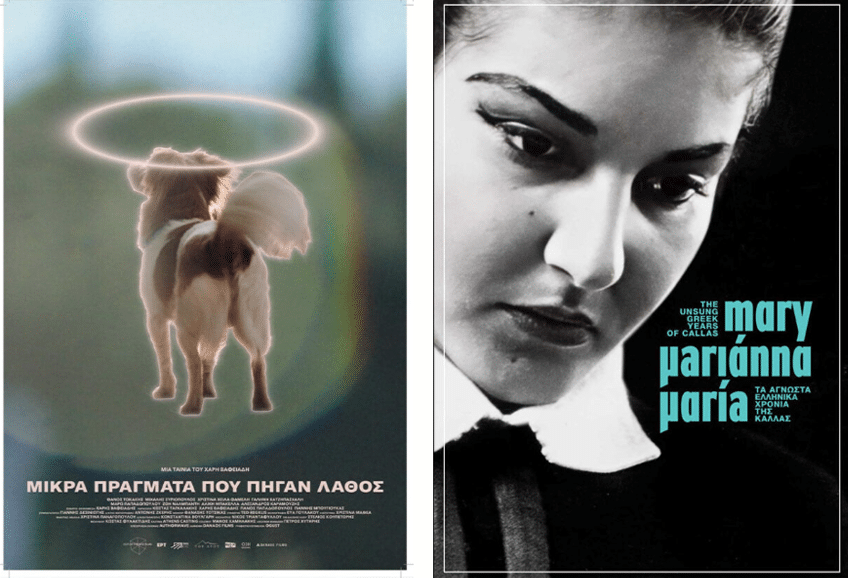
The 9th annual Atlanta Greek Film Expo will showcase five critically acclaimed Greek feature films (all with English subtitles) and four short films on October 25–27 at the iconic Tara Theatre on Cheshire Bridge Road.
With the goal of elevating and promoting Hellenic (Greek) culture and arts in Atlanta, the annual expo showcases some of the most dynamic, innovative and highly acclaimed films from Greece and Cypress.
One of the films showing at this year’s event, Murderess, is Greece’s submission for Best International Feature Film at the 97th Annual Academy Awards (which will air in 2025).
Free parking will be available at the venue each day of the expo. And the three-day event concludes with an open-to-the-public, celebratory closing reception at the Hellenic Center, located at 2500 Clairmont Road, NE.
Atlanta Greek Film Expo Schedule
Friday, October 25, 7 pm — Little Things That Went Wrong
This comedic drama is a clever and touching exploration of fatherhood, failure and redemption.
Saturday, October 26, 4 pm — Mary, Marianna, Maria
A documentary which chronicles the early years of Maria Callas in Greece, offering a rare and insightful look into her formative years.
Saturday, October 26, 7 pm — Murderess
This year’s Oscar entry for Greece offers a dark portrayal of moral and existential dilemmas, staying true to the literary masterpiece by Alexandros Papadiamantis.
Sunday, October 27, 2 pm — Guest Star
A satirical and engaging film that explores themes of fame, personal identity and the often absurd nature of public personas.
Sunday, October 27, 5 pm — The Last Taxi Driver
A gripping drama that delves into obsession, unfulfilled dreams and the hidden turmoil beneath a seemingly ordinary life.
Sunday, October 27, 7:30 pm — IT’S A WRAP Closing Reception
Eat, drink and celebrate in Greek style at the beautiful Hellenic Center!
Tickets and information
Ticket prices range from $10-$25 for the films and $45 for the closing reception. Special VIP and Film Lover packages are also available.
For more information or to purchase tickets, visit atlantagreekfilm.org.
If you have questions about the event, email atlantagreekfilm@gmail.com.
Related
Around Atlanta
Local Artist Represented by Fay Gold Gallery at Upcoming Atlanta Art Fair
Published
3 weeks agoon
October 2, 2024
Local artist and Peachtree Corners resident, Amy Rader, will be part of the first-ever Atlanta Art Fair, being held at Pullman Yards October 3–6. The fair will feature local galleries, artists and curators alongside a variety of national programs and a dynamic series of public art projects and events presented at locations around town.
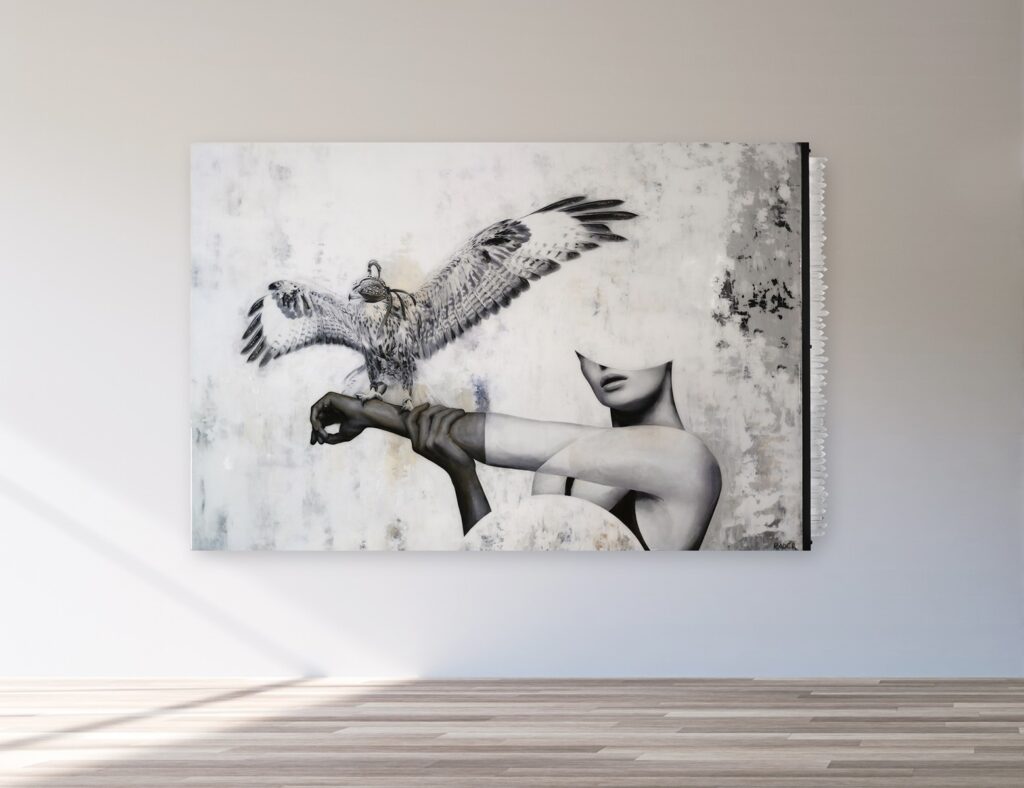
Aimed at amplifying local voices and acting as a platform for the city’s incredible creativity, the Atlanta Art Fair — the first major art fair of its kind in the city — will showcase a wide range of artistic styles and genres, including contemporary work, paintings, photography, live performances and innovative projects.
Represented by the esteemed Fay Gold Gallery, Rader will have several pieces on show at the Fay Gold Booth E07, something the artist is thrilled about, as her connection to Gold spans three decades.
“In 1993, while still in high school, I attended a summer arts program at Lagrange College,” Rader recalled. “We took a field trip to visit the top gallery in Atlanta — the Fay Gold Gallery. I stood in awe of the marvelous pieces on display … [Later] after years working with ad agencies for Fortune 500 clients, I was ready to leave my career in graphic design to pursue art full time. Showing my work at a gallery in Buckhead introduced me to Fay Gold 29 years after that visit in 1993. It was a full circle moment.”
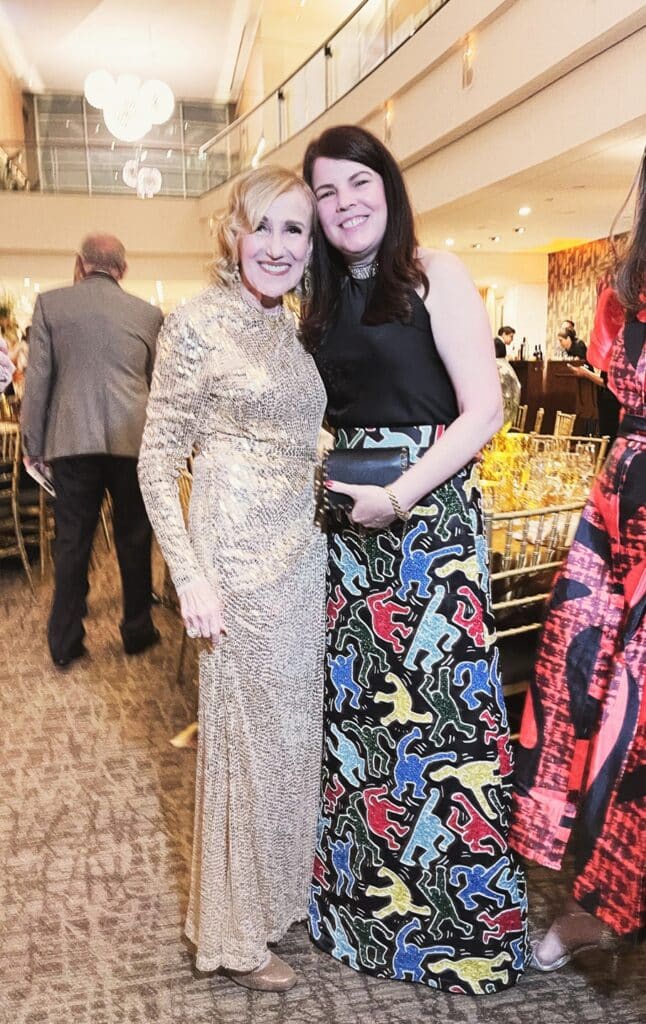
A local legend
An Atlanta art legend, Fay Gold is best known for her groundbreaking exhibitions of artists such as Jean-Michel Basquiat, Cindy Sherman, Keith Haring, Andres Serrano and Robert Mapplethorpe.
She curated the formative years of Elton John’s personal art collection and raised $750,000 for the Elton John Aids Foundation by creating and chairing two art auctions for the organization. Over the years, she’s also worked with corporate clients and has received dozens of awards for her many contributions to the Atlanta art scene.
Fay Gold represented Rader’s work in a successful art show in 2022 followed by an art auction in 2023 and now at the Atlanta Art Fair in 2024.
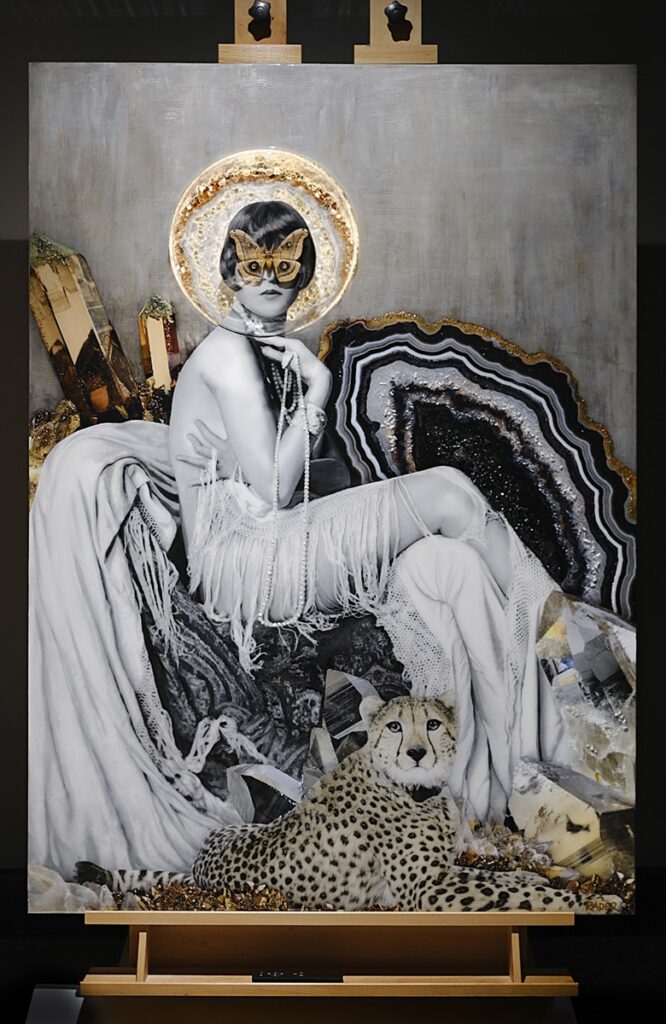
A lifelong love of art
In love with art from an early age, Rader was encouraged by a high school teacher to apply to art school, which she did, receiving a scholarship from the Art Institute of Atlanta and graduating from the (now-closed) art school with the Best Portfolio Award. For the past 25+ years Rader has worked within the design and art fields, building an impressive body of work, with a particular focus on creating traditional art and large-scale pieces for hospitality spaces.
Her work can be seen in galleries, private collections, luxury buildings, restaurants and more, including the Buckhead Art & Company Gallery, The Hue Midtown and Chops restaurant in Buckhead.
According to her website, Rader’s notable accomplishments include “being selected to represented Tesla and Microsoft at Art Basel, commissioned work for a new Lake Nona project with Tavistock, creating custom pieces for two $140 million luxury Related Group buildings and commissioned work for Norwegian Cruise Line’s new Prima ships.”
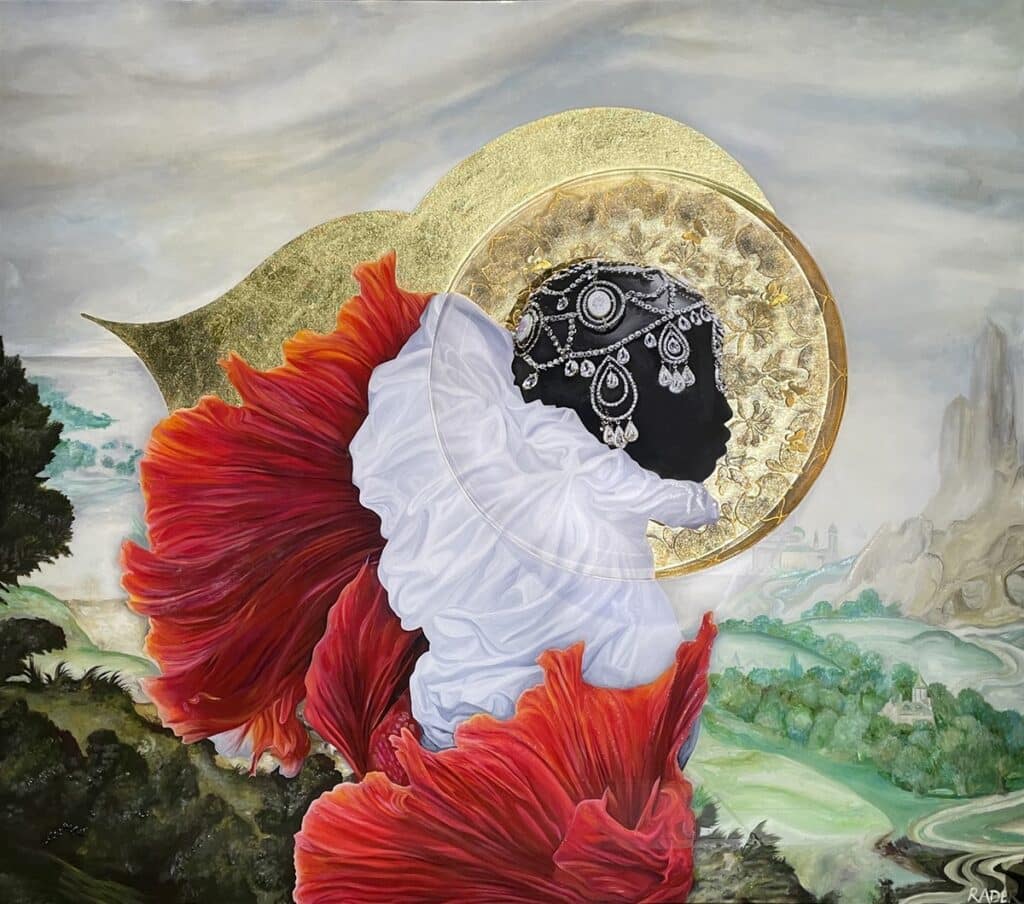
Rader is especially excited about the Atlanta Art Fair — not just being part of it, but the fact that it’s happening at all.
“This is such a big deal for the arts community,” said Rader. “The Art Fair is a wonderful addition to Atlanta’s cultural offerings. I’m describing it as our very own ‘Art Basel’ level fair, with both national and international galleries. We are used to art festivals, but this is a different caliber of event by the producers behind the San Francisco Art Fair, Seattle Art Fair and Art on Paper New York.”
The details
The Atlanta Art Fair takes place at Pullman Yards and other venues throughout the city, October 3–6. Schedules, artist lists, tickets and additional information can be found online at theatlantaartfair.com.
For more about Amy Rader, visit raderdesigns.net.
To learn more about Fay Gold and the Fay Gold Gallery, visit faygoldgallery.com.
Related
Around Atlanta
Brennan Lee Mulligan, DrLupo, Biqtch Puddin’ and More Headline Action-Packed DreamHack Atlanta Lineup
Published
1 month agoon
September 23, 2024
Three-day gaming lifestyle festival brings best of gaming, tabletop roleplaying, indies, music, esports and cosplay to the Big Peach
DreamHack (ESL FACEIT Group’s international gaming lifestyle festival) has announced exciting new guests and programming taking place at this year’s DreamHack Atlanta, October 4–6 at the Georgia World Congress Center.
Brennan Lee Mulligan returns to DreamHack alongside the festival’s largest-ever Dungeons & Dragons area. World-class creators, including DrLupo, and the Atlanta debut of the Drag & Drop cosplay drag show hosted by local performer Biqtch Puddin’ are also on the schedule.

“DreamHack features the best of gaming culture from all over the world right here in Atlanta,” said Guy Blomberg, director of festivals, North America, DreamHack. “We’re bringing the best global talent and highlighting local developers, streamers, performers and storytellers to create a celebration of everything to do with gaming.”
Over 20 of the biggest names from Dimension 20, Critical Roll, Lynvannder and more expand DreamHack’s roleplaying offerings
Following his DreamHack debut this summer, Dropout’s resident Dungeon Master Brennan Lee Mulligan returns to DreamHack with an all-star cast of adventurers. Joined by Zac Oyama, Erika Ishii, Anjali BhimaniandAliza Pearl, the party will explore an all-new one-shot adventure designed specifically for DreamHack Atlanta.
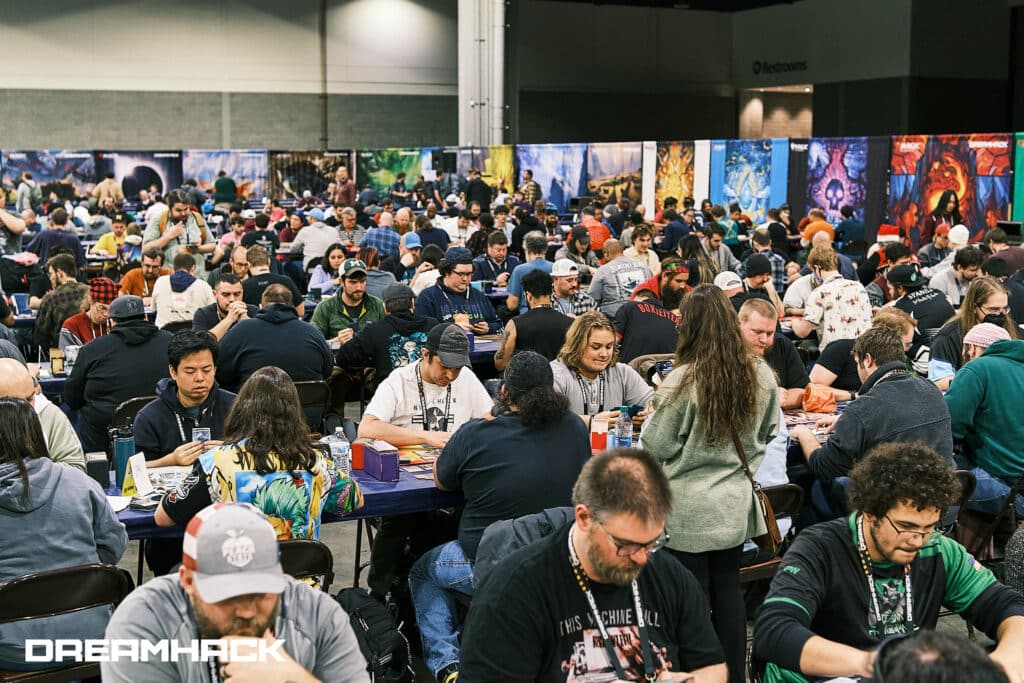
Fans can also step into the Tabletop Tavern, a dedicated stage for live roleplaying game content presented in partnership with Lynnvander. Veteran storytellers, writers and actors will join forces for a slew of custom adventures. Special guests include worldbuilder and dungeon master Jasmine Bhullar, writer and actress Rekha Shankar, game designer and writer Keith Baker, voice actress Mela Lee and many more.
The LEGO Group makes DreamHack Atlanta debut with all-new Builders Zone
DreamHack guests can expand on the games they know and love through the unlimited creative opportunities of LEGO®️ bricks at DreamHack Atlanta’s all-new Builders Zone, sponsored by the LEGO Group. Attendees can participate in gaming-themed make-and-take builds, contribute to the LEGO brick-built mystery mural on-site or even participate in DreamHack Quests for a chance to take home new LEGO sets. DreamHack will also invite creators to the Main Stage for a competition to celebrate gamers’ creative LEGO builds at the festival — with special guests to be announced.

DreamHack Atlanta hosts largest-ever Indie Playground and Artist Alley
DreamHack’s Indie Playground and Artist Alley will have their largest footprints yet, with 60 game developers as well as 60 more independent artists — almost half of which are Atlanta locals. In addition to exploring booths, guests can participate in the Artist Alley Stamp Rally, trade unique pins at the pin swap board, trick-or-treat with vendors and get hands-on with up-and-coming video games. Both the Artist Alley and Indie Playground are open to all guests daily from 12 to 6 p.m.

Drag & Drop cosplay drag show returns with Atlanta debut
Drag & Drop, the festival’s flagship cosplay drag show, will return after its debut at DreamHack Dallas. Hosted by Emmy-nominated artist Biqtch Puddin’, the show will feature a host of new nerdy performances and performers who slay video game bosses, and looks. Participating artists include Brigitte Bidet, LaZanya Ontré, Dotte Com and more.
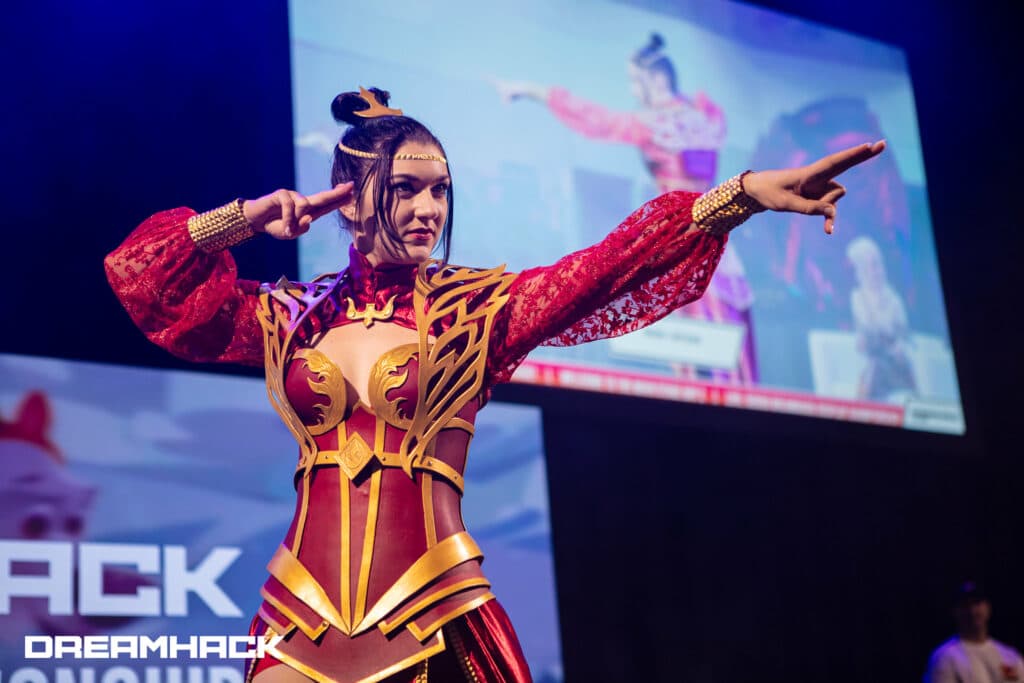
Drag & Drop complements a full weekend of cosplay programming for attendees. The festival’s cosplay competition on Saturday, will be judged by an all-star cast of professional cosplayers, including Atlanta-native Pumpkin.Pixie.Princess and host Jahara Jayde.
DreamHack Atlanta sets record with over 500 creator guests, including Jake Lucky, bbjess and more
This year’s DreamHack Atlanta will host the largest creator cohort ever for a DreamHack Atlanta festival, with over 500 local and national influencers onsite. After receiving a record-setting number of applications, DreamHack Atlanta’s host of content creators will participate in Main Stage competitions, host meet & greets with fans and stream live from DreamHack’s Creator Hub. Top guests include Main Stage emcee bbjess, creator interview experts Jake Lucky and HUN2R, veteran streamers DrLupo (hosted in partnership with Anthros) and Amouranth and more.

Georgia FIRST Robotics brings local high schoolers to DreamHack for STEM showcase
Georgia high school students from across the state will take part in Georgia FIRST Robotics’ interactive showcase live at DreamHack Atlanta. The program requires students and their peers to collaborate on creating their own industrial-size robots to go head-to-head in challenging field games. Students are behind it all — from raising funds to designing their teams’ brand to building and piloting their robots — and the festival’s showcase will highlight the work that goes into making these high-tech machinations.
All of this is just one slice of what DreamHack Atlanta 2024 has to offer.
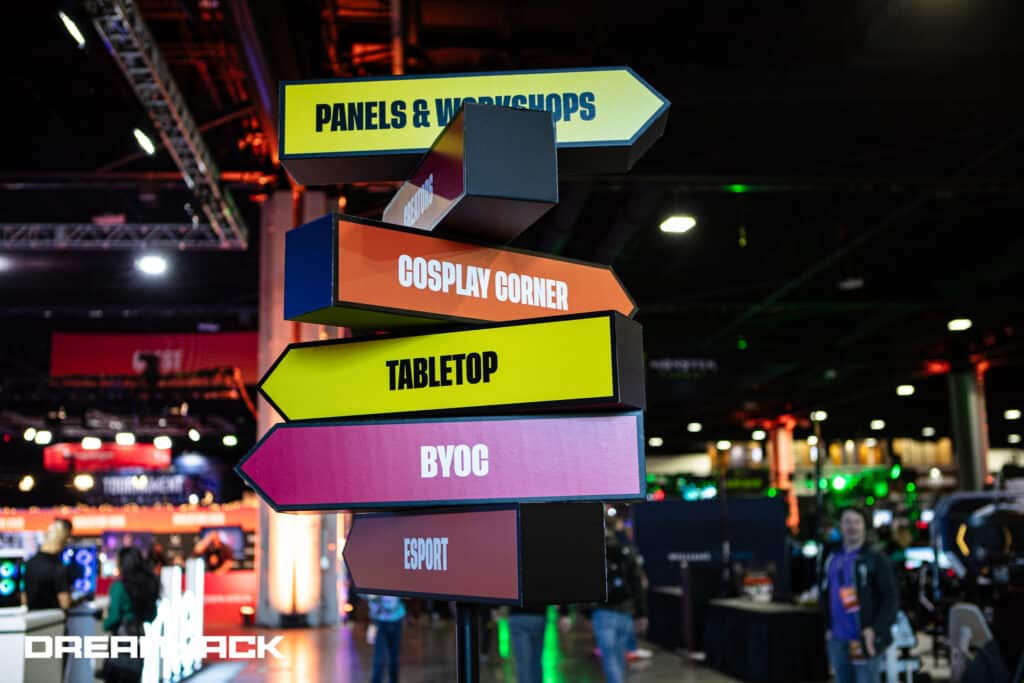
The details
DreamHack Atlanta takes place at the Georgia World Congress Center on October 4–6
For more information on competitions at DreamHack Atlanta — including world-class esports tournaments, grassroots competition in the Freeplay area, cosplay contests and more —click here.
Tickets are still available and start at $45 for a single day or $109 for three-day access.
For more information or to purchase tickets, visit dreamhack.com/atlanta/tickets/.
Related
Read the Digital Edition
Subscribe
Keep Up With Peachtree Corners News
Join our mailing list to receive the latest news and updates from our team.
You have Successfully Subscribed!

TransPak Acquires Reid Packaging to Expand East Coast Presence

Peachtree Corners City Leaders Engage Residents on Land Use Development

The NOW Massage Opens Peachtree Corners Boutique at The Forum

GCPL Accepting Applications for Next New Start Entrepreneurship Incubator

Ruwa Romman’s Re-Election Bid: Addressing Housing, Taxes and Transportation in Gwinnett [Podcast]

Councilmember Sadd to Host Town Hall Meeting on October 29

PTC Arts Inc. Furthers Mission to Provide Accessible Art

From Corporate to Sci-Fi Author: Jill Tew Discusses ‘The Dividing Sky’ [Podcast]

From Corporate to Sci-Fi Author: Jill Tew Discusses ‘The Dividing Sky’ [Podcast]

PTC Arts Inc. Furthers Mission to Provide Accessible Art

Councilmember Sadd to Host Town Hall Meeting on October 29

Ruwa Romman’s Re-Election Bid: Addressing Housing, Taxes and Transportation in Gwinnett [Podcast]

GCPL Accepting Applications for Next New Start Entrepreneurship Incubator

TransPak Acquires Reid Packaging to Expand East Coast Presence

The NOW Massage Opens Peachtree Corners Boutique at The Forum

Peachtree Corners City Leaders Engage Residents on Land Use Development

Light up the Corners [Video]

Capitalist Sage: Business Leadership in Your Community [Podcast]

Cliff Bramble: A Culinary Adventure through Italy

Top 10 Brunch Places in Gwinnett County

A Hunger for Hospitality

THE CORNERS EPISODE 3 – BLAXICAN PART 1

Top 10 Indoor Things To Do This Winter

The ED Hour: What it takes to Remove Barriers from Education

Peachtree Corners Life
Topics and Categories
Trending
-
Business1 week ago
TransPak Acquires Reid Packaging to Expand East Coast Presence
-
Health & Wellness1 week ago
The NOW Massage Opens Peachtree Corners Boutique at The Forum
-
Community5 days ago
GCPL Accepting Applications for Next New Start Entrepreneurship Incubator
-
Peachtree Corners Life4 days ago
Ruwa Romman’s Re-Election Bid: Addressing Housing, Taxes and Transportation in Gwinnett [Podcast]









